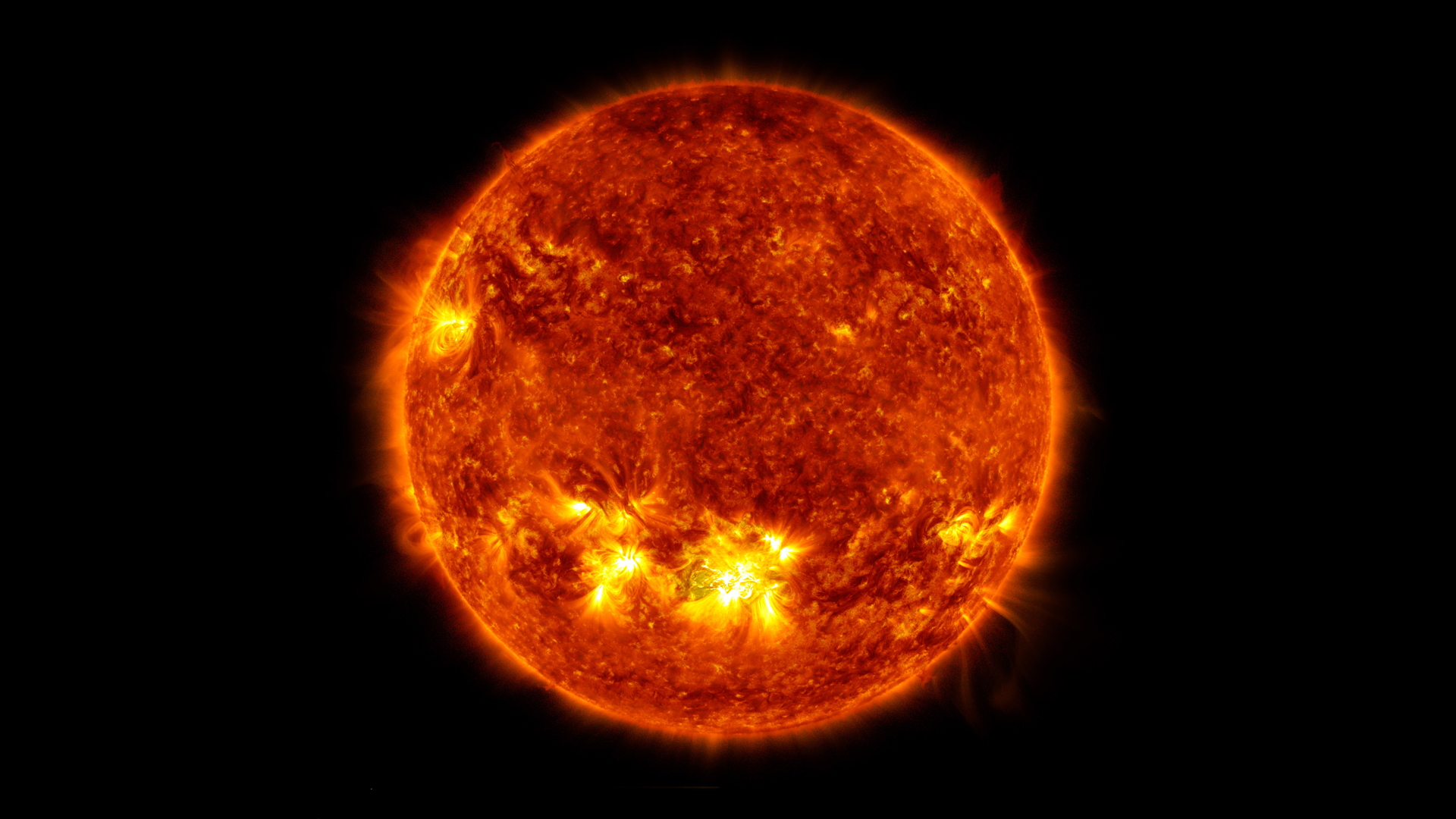Huge solar flare could supercharge northern lights on Halloween
Auroras may be visible to stargazers in New York, Idaho, Illinois, Oregon, Maryland and Nevada.
A massive solar flare from the sun could lead to a dazzling (and maybe spooky) northern lights display for parts of the northern United States this Halloween, according to a NASA scientist.
The sun storm, a powerful X1-class solar flare, erupted from the sun on Thursday (Oct. 28) and sent a vast cloud of charged particles toward Earth that should arrive over Halloween weekend, and possibly even the haunted day itself. Those particles will slam into the Earth's atmosphere to amplify the regular northern lights caused by the sun's solar wind.
The solar flare, the second most powerful eruption from the sun this year, sparked a strong geomagnetic storm that should supercharge the northern lights, and could make them visible from as far south as New York, Idaho, Illinois, Oregon, Maryland and Nevada, said C. Alex Young, NASA's associate director for science at the Heliophysics Division of the agency's Goddard Space Flight Center in Maryland.
Related: The sun's wrath: Worst solar storms in history

If you take a photograph of the Halloween northern lights from the solar flare, send images and comments in to spacephotos@space.com.
"This could be a great show for people in the mid-to-upper U.S. latitudes for aurora," Young said in an email late Thursday. "Especially those in Canada, [Upper Peninsula of Michigan], Alaska, Iceland, Norway, Scotland, etc."
Seeing auroras at such low latitudes is rare and can be difficult, especially if you live in a big city filled with streetlights and other light pollution. To get your best chance at seeing any auroras this weekend, try to get away from city lights and find the darkest sky possible.
Also, don't expect to see the dazzling, sweeping displays common at higher latitudes, Young warned. It won't be as dynamic a show as the ribbons of light seen far northern regions known for such light shows, or those seen by astronauts from space.
Get the Space.com Newsletter
Breaking space news, the latest updates on rocket launches, skywatching events and more!
If you're hoping to see the northern lights for yourself, check out our guides on where and how to photograph the aurora, as well as the best equipment for aurora photography and how to edit aurora photos once you have your snapshots. If you need equipment, consider our best cameras for astrophotography and best lenses for astrophotography to start out.
Young said the solar flare was accompanied by a coronal mass ejection (CME), a huge eruption of radiation, that spewed solar particles away from the sun at a mind-boggling 2.5 million mph (4 million kph).
"The current estimates for the CME are that it will reach Earth on Oct. 31," Young said.
Thursday's solar flare erupted from an active sunspot called AR2887 that is currently located in the center of the sun as it makes its way across the star's face, as seen from Earth. Another active sunspot, called AR2891, rotated into view this week for its own two-week trip across the sun's face. It fired off a moderate, M-class solar flare on Sunday (Oct. 24).
X-class solar flares are the strongest type of sun eruptions. When they're aimed directly at Earth, the most powerful ones (the X1 flare on Thursday is the lowest level) can endanger astronauts in space, interfere with satellite communications signals and affect power grids on Earth. Thursday's solar flare caused a temporary radio blackout for high frequencies, as well as a GPS blackout for systems that use low-frequency signals, Young said.
"The flare will probably have no impact on the ISS," he added, referring to the International Space Station, which is home to seven astronauts from the U.S., Japan, France and Russia. Four more astronauts will launch to the station on SpaceX's Crew-3 mission on Halloween.
As for the rest of us, there's no need to worry, either, Young said.
"We don’t have much to worry about as far as impact to our daily lives but there could be more space weather impacts in the future as we continue to move towards solar max around 2024-2025," he added.
The sun is currently in the beginning phase of its latest 11-year solar cycle, called solar cycle 25, in which its activity rises and falls over time. Currently its activity is relatively low.
"And the sun can always surprise with an unexpected large flare/CME/SEP combo," Young said. "Historically, those often come after we pass solar max but the Sun, she always aims to keep us on our toes.
Email Tariq Malik at tmalik@space.com or follow him @tariqjmalik. Follow us @Spacedotcom, Facebook and Instagram.
Join our Space Forums to keep talking space on the latest missions, night sky and more! And if you have a news tip, correction or comment, let us know at: community@space.com.

Tariq is the Editor-in-Chief of Space.com and joined the team in 2001, first as an intern and staff writer, and later as an editor. He covers human spaceflight, exploration and space science, as well as skywatching and entertainment. He became Space.com's Managing Editor in 2009 and Editor-in-Chief in 2019. Before joining Space.com, Tariq was a staff reporter for The Los Angeles Times covering education and city beats in La Habra, Fullerton and Huntington Beach. In October 2022, Tariq received the Harry Kolcum Award for excellence in space reporting from the National Space Club Florida Committee. He is also an Eagle Scout (yes, he has the Space Exploration merit badge) and went to Space Camp four times as a kid and a fifth time as an adult. He has journalism degrees from the University of Southern California and New York University. You can find Tariq at Space.com and as the co-host to the This Week In Space podcast with space historian Rod Pyle on the TWiT network. To see his latest project, you can follow Tariq on Twitter @tariqjmalik.









